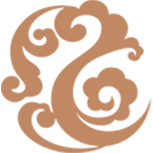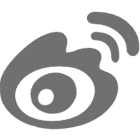Huixiang Research
Huixiang Research... Tear off the "fig leaf" of the webcast e-commerce industry-to analyze the crime of selling counterfeit registered trademarks.
2023-08-28
Introduction: The barbaric growth of the live e-commerce field is not illegal.
2016 is the first year of the birth of webcast. Since then, the live e-commerce industry has sprung up. Under the background of the digital era, the live e-commerce industry has realized the two-way integration of live and e-commerce. The three elements of "people, goods and markets" are reconstructed through live channels. After experiencing the development stage of the outbreak period, the current live e-commerce mode is relatively mature and the live e-commerce pattern has been reshuffled in recent years. According to statistics, from January to April 2023, the national online retail sales have reached 4410.8 billion yuan. However, under the "live e-commerce" mode, the live broadcast platform has gradually become a "hotbed" for crime. The risks of suspected crimes by relevant network anchors and platforms are increasing day by day. However, the barbaric growth of the live e-commerce field is not illegal, and the country is attacking hard to rectify the chaos in the live e-commerce industry.
In August 2023, the General Administration of Market Supervision issued the Opinions on Strengthening the Enforcement of Intellectual Property Rights in the New Era. In response to the new characteristics of current infringement and counterfeiting, it proposed to strengthen the enforcement of intellectual property rights in the Internet field, and severely investigate and deal with infringement and counterfeiting in online sales and live streaming. Illegal behavior. Shortly after the "opinion" was put forward, Beijing Haidian police strongly cracked down on 11 criminal gangs suspected of selling counterfeit registered trademarks, and criminally detained gang members in accordance with the law. 11 suspects, including Wang, sold counterfeit registered trademarks at ultra-low discounts in webcasts, involving more than 400,000 yuan. Since then, various regions in Beijing have torn off the fig leaf of the live e-commerce industry and eliminated illegal and criminal acts.This article will focus on the high-incidence crime of live e-commerce industry-the crime of selling goods with counterfeit registered trademarks, and talk about the criminal law regulation and the path of the crime.
This crime is stipulated in Article 214 of the the People's Republic of China Criminal Law, "The crime of selling goods with counterfeit registered trademarks, selling goods that are known to be counterfeit registered trademarks, and the amount of illegal income is relatively large or there are other serious circumstances, shall be sentenced to not more than three years Fixed-term imprisonment, or a fine; if the amount of illegal income is huge or there are other particularly serious circumstances, he shall be sentenced to fixed-term imprisonment of not less than three years but not more than ten years and a fine".
As a typical representative of trademark crime, the crime not only infringes the intellectual property rights of relevant well-known brands, but also seriously damages the rights and interests of consumers. It also destroys the normal order of trademark management and market competition in China, and seriously deviates from the current policy trend of strengthening intellectual property protection and building an innovative country. The subjects of trademark crimes include not only individuals and units who have reached the age of 16 and have the ability to be criminally responsible, but also individual industrial and commercial households and individual partnerships that have obtained business licenses, as well as other individuals who have not obtained business licenses.
The subjective aspect of this crime is required to be intentional, and knowing that the goods sold are counterfeit registered trademarks, the specific rules of determination are set out in the path of the crime and will not be repeated here. The objective aspect requires the act of selling goods with counterfeit registered trademarks. Sales refers to the act of selling goods to others by means of purchasing, promoting, selling or peddling, including wholesale and retail, inviting people to sell on a commission basis, entrusted sales and other forms, and the goods required to be sold belong to "counterfeit registered trademarks". The specific judgment method will also be elaborated in the path of crime.
It is worth noting that the Criminal Law Amendment (11) amended the crime of selling goods with counterfeit registered trademarks, changing the original provisions of "large sales amount" and "huge sales amount" to "large amount of illegal income or other serious circumstances", "huge amount of illegal income or other particularly serious circumstances". Therefore, there are two criteria for the crime, one is the amount of illegal income, and the other is the serious circumstances of the crime. Because when "illegal income" is taken as an element of conviction, it is possible that the perpetrator of the crime has no actual profit but has social harm and leads to inappropriate crime. Therefore, the revised criminal law provisions will "large amount of illegal income" and "other serious circumstances" are juxtaposed. The form of punishment with "serious circumstances" can be described as "no beating, but must be punished", while the form of punishment with "particularly serious circumstances" is "combination of beating and punishment".
However, the current effective laws and regulations and judicial interpretations are not clear about other serious circumstances and the calculation method of illegal income, and the amount standard of "the amount of illegal income is large and huge", but even if the amount of illegal income cannot be ascertained, so far The case law also determines the criminal circumstances based on the sales amount, the value of the goods, and the serious adverse effects. Therefore, the author believes that this crime should fully consider the amount of sales, the duration of sales of infringing goods, the number of other factors. In addition, the Supreme People's Court and the Supreme People's Procuratorate, which have not yet taken effect, have filled the legislative gap in the "Interpretation on Several Issues Concerning the Application of Laws in Handling Criminal Cases of Infringement of Intellectual Property Rights (Draft for Comment)" (referred to as the "Draft for Comment"). It will further clarify the crime standard for the amount of illegal income, that is, if the amount of illegal income is more than 30000 yuan, it should be recognized as "large"; if the amount of illegal income reaches 300000 or more, it shall be deemed as "the amount of illegal income is huge".
In addition, this crime is the conviction and sentencing standard for a dual-subject criminal unit crime, which is equivalent to the conviction and sentencing standard for an individual crime. Article 6 of the Interpretation (II) on Several Issues Concerning the Specific Application of Laws in Handling Criminal Cases of Infringement of Intellectual Property Rights (referred to as "Fashi [2007] No. 6 Document") clearly stipulates that the unit shall implement the acts specified in Articles 213 to 219 of the Criminal Law, conviction and punishment shall be in accordance with the "Interpretation of the Supreme People's Court and the Supreme People's Procuratorate on Several Issues Concerning the Specific Application of Law in Handling Criminal Cases of Infringement of Intellectual Property Rights" and the corresponding conviction and sentencing standards for individual crimes stipulated in this Interpretation. In addition to the above, this crime is a representative crime of trademark type, and the legislator has strengthened the crackdown on this kind of crime from the level of "restricted probation" and "high fine", which is detailed as follows:
Restricted probation

Article 8 of the (III) of Interpretation of the Supreme People's Court and the Supreme People's Procuratorate on Several Issues Concerning the Specific Application of Laws in Handling Criminal Cases of Intellectual Property Infringement ("Fashi [2020] No. 10 Document") stipulates that heavier penalties may be imposed as appropriate, and probation is generally not applicable, including (I) that mainly infringe intellectual property rights; (II) infringe intellectual property rights again after being administratively punished for infringing intellectual property rights constitutes a crime; (III) counterfeiting the registered trademarks of commodities such as materials for rescue and disaster relief and epidemic prevention during major natural disasters, accidents, disasters, and public health incidents; (IV) refusing to hand over illegal income. Through the above circumstances, it can be judged that the actor has a high degree of subjective malignancy and a poor attitude of repentance. For such actors, the legislator stipulates that they can be punished as appropriate, and probation is not applicable.
estimate of the fine

This crime is mainly a profit-making crime, which seeks profit by infringing on the intellectual property rights of others. Sentencing and punishment are divided into two levels. The free penalty takes three-year fixed-term imprisonment as a watershed, and the property penalty is also divided into two types of punishment. When the behavior meets the standard of "serious circumstances", a fine or a single fine is imposed, which belongs to "no beating, but must be punished"; When the behavior meets the standard of "the circumstances are particularly serious", it is a "combination of punishment and punishment". In determining the amount of the penalty,Taking into account the amount of illegal proceeds of the crime, the amount of illegal business operations, the amount of losses caused to the right holder, the number of infringing and counterfeit articles, and social harm, a fine shall be imposed in accordance with the law.
Fashi [2020] No. 10 document determines the standard of fine, and the amount of fine is generally determined at more than 1 time and less than 5 times the amount of illegal income. If the amount of illegal income cannot be ascertained, the amount of fine shall generally be determined according to more than 50% and less than 1 time of the amount of illegal business. Neither the amount of illegal income nor the amount of illegal business operations can be ascertained. If the sentence is fixed-term imprisonment of not more than three years, criminal detention, public surveillance, or a single fine, the amount of the fine shall generally be determined between 30000 yuan and 1 million yuan; if the sentence is fixed-term imprisonment of more than three years, the amount of the fine shall generally be determined between 150000 yuan and 5 million yuan.
Analysis on the path of crime

Path one of the crime: the evidence that the perpetrator subjectively knew or presumed subjectively knew that the goods of the counterfeit registered trademark could not be sold to a sufficient degree.
Article 9 of the Interpretation of the Supreme People's Court and the Supreme People's Procuratorate on Several Issues Concerning the Specific Application of Law in Handling Criminal Cases of Infringement of Intellectual Property Rights (hereinafter referred to as "Fashi [2004] No. 19 Document") stipulates that: under any of the following circumstances, it shall be deemed as "knowing" [1] as stipulated in Article 214 of the Criminal Law: (1) knowing that the registered trademark on the goods it sells has been altered, exchanged or covered; (II) has been subject to administrative punishment or civil liability for selling goods with counterfeit registered trademarks, and has sold the same goods with counterfeit registered trademarks; (III) forging or altering the authorization document of the trademark registrant or knowing that the document has been forged or altered; (IV) other cases where it is known or should be known that the goods are counterfeit registered trademarks. ([1] The Interpretation on Several Issues Concerning the Application of Law in Handling Criminal Cases of Intellectual Property Infringement (Draft for Solicitation of Comments) adds two situations that can be identified as "knowingly", that is, the (IV) purchases or sells goods at a price significantly lower than the market price without justifiable reasons; (V) after being discovered by the administrative law enforcement agency or the judicial agency to sell goods with counterfeit registered trademarks, transferring or destroying infringing goods, accounting documents and other evidence or providing false evidence;)
It is known from the above that the subjective aspects of this crime are intentionally constituted, and the goods that need to be sold by the perpetrator are known to be "counterfeit trademark goods", and the rule of "presumption of knowledge" is mainly used in judicial practice. Therefore, the analysis of the evidence in the case can directly determine whether the actor subjectively knows that the goods he sells are "counterfeit trademark goods", if not, according to the above-mentioned presumption of knowledge, the analysis of the evidence in the case can be presumed to be the actor's knowledge can reach the point of sufficient. If subjective knowledge cannot be proved, it does not constitute this crime.
Path 2: Whether the goods involved are "counterfeit registered trademark goods", otherwise, does not constitute this crime.
The goods involved must be "goods with counterfeit registered trademarks", if not, it does not constitute this crime. A counterfeit registered trademark refers to a commodity that uses the same trademark as the registered trademark of the registered trademark owner on the same commodity without the permission of the registered trademark owner,There are two core points of judgment: one is "the same commodity";The second is "the same registered trademark". The "Opinions on Several Issues Concerning the Application of Law in Handling Criminal Cases of Intellectual Property Infringement" (referred to as "Fashi [2011] No. 3 Document") clarifies the identification rules of "the same commodity", commodities with the same name and commodities with different names but referring to the same thing, it can be identified as "the same kind of goods" ("name" refers to the name used by the Trademark Office of the State Administration for Industry and Commerce in the work of trademark registration, usually the name of the goods specified in the International Classification of Goods and Services for Trademark Registration). It also includes "commodities with different names but referring to the same thing", which refers to commodities that are the same or basically the same in terms of functions, uses, main raw materials, consumption objects, sales channels, etc., and are generally considered by the relevant public to be the same thing. The determination of "the same kind of goods" should be compared between the goods approved for use by the registered trademark of the right holder and the goods actually produced and sold by the actor.
At the same time, Article 1 of Fashi [2020] No. 10 also specifies the identification rules for "trademarks that are the same as their registered trademarks": (1) changing the font, letter case or horizontal and vertical arrangement of registered trademarks is basically the same as that of registered trademarks; (II) changing the spacing between words, letters, numbers, etc. of registered trademarks, which is basically the same as that of registered trademarks; (III) changing the color of registered trademarks, it does not affect the distinctive features of the registered trademark; (IV) only add the common name of the product, model and other elements that lack distinctive features to the registered trademark, and does not affect the distinctive features of the registered trademark; the three-dimensional signs and planar elements of the (V) and the three-dimensional registered trademark are basically no different; (VI) other trademarks that are basically no different from the registered trademark and are sufficient to mislead the public. to sum up,If it does not belong to "the same commodity" or "does not belong to the same trademark", it should not be regarded as a commodity with a counterfeit registered trademark, which does not constitute this crime.
Path 3: The calculation method of the amount of illegal income is not clear, and there is room for defense in the calculation of the amount of illegal income.
According to the "profit theory", the illegal income is the amount of profit. The legal interest protected by the criminal law rules of the crime of selling goods with counterfeit registered trademarks is the intellectual property rights of registered trademarks. This behavior occurs in the intermediate link of selling counterfeit products. Refer to the "Measures for the Determination of Illegal Income in Administrative Punishment Cases of Industrial and Commercial Administrative Organs" published by the State Administration for Industry and Commerce. It is clear that "the illegal income from the illegal sale of goods shall be calculated by deducting the purchase price of the goods sold from the sales income of the illegally sold goods", that is to say, the income minus the purchase price, and the labor and site expenses shall not be deducted, that is, the illegal income of the illegal sales link. After the amendment of the criminal law, the calculation method of the amount of illegal income is not unified. At that time, in judicial practice, there will be a certain defense space for the amount of illegal income. If the perpetrator's illegal gains and sales amount cannot be ascertained, the conditions for prosecution will not be met.
Path 4: Determine whether the goods with counterfeit registered trademarks have been sold. If they have not been sold, the amount cannot reach the corresponding amount standard and cannot be considered a crime.
If the goods with counterfeit registered trademarks have not yet been sold, but the value of the goods is large, which violates the legal interests protected by the criminal law and has realistic social harm, they can still be convicted and punished as attempted, and the completed offender shall be given a lighter or mitigated punishment.The amount standard can be based on the relevant provisions of the law interpretation [2011] No. 3 document, selling goods that are known to be counterfeit registered trademarks, and in any of the following circumstances, in accordance with the provisions of Article 214 of the Criminal Law, "to sell counterfeit registered trademarks Conviction and punishment for the crime of goods (attempted):
(I) goods with counterfeit registered trademarks have not yet been sold, and the value of the goods is more than 150,000 yuan; (II) partial sales of goods with counterfeit registered trademarks, the sales amount is less than 50,000 yuan, but the total value of the goods with counterfeit registered trademarks that have not yet been sold is more than 150,000 yuan. If the value of goods that have not yet been sold cannot reach the conviction and sentencing standard of 150000 yuan, the act that has not yet been sold cannot constitute this crime ".
Path 5: Whether the crime of selling goods with counterfeit registered trademarks can be absorbed by other crimes
Committing the crime of counterfeiting a registered trademark and selling it again.Goods that are known to be counterfeit registered trademarks of othersIf a crime is constituted, combined punishment for several crimes shall be implemented. And the crime of counterfeiting registered trademarks, and sales.The counterfeit registered trademark of the goodsIf the case constitutes a crime, it shall be convicted and punished for the crime of counterfeiting a registered trademark in accordance with the provisions of Article 213 of the Criminal Law. In the latter case, this crime is absorbed by the crime of counterfeiting a registered trademark and is punished from a felony.

Lawyer Presentation

Li Yuan Lawyer
Li Yuan, master of law, graduated from the Academy of criminal law, Beijing Normal University. She is now a lawyer of Beijing Huixiang law firm. She has a dual discipline background of journalism and law. Her main field is criminal business. She focuses on economic crimes and duty crimes, and has rich experience in handling criminal cases. He once represented a loan aid company in a suspected illegal business case, and submitted a legal opinion during the review and arrest period of the procuratorate to help the business manager successfully obtain a guarantor pending trial; he represented Shang XX to help information network activities and fraud cases, prompting the procuratorate to revise the sentencing opinion, and finally The court reduced the sentence and achieved good defense results; once represented a private entrepreneur in a case of contract fraud, embezzlement of funds, embezzlement, and loan fraud, promote the procuratorate to supervise the case for a long time, so that the court did not determine the defendant's contract fraud and job embezzlement crimes, and achieved good defense results.
Related recommend
Lawyer Research Center, China University of Political Science and Law
Beijing Lawyers Association











